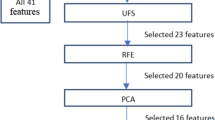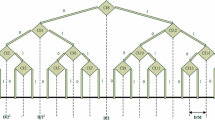Abstract
Target localization problem, in which the location of an unknown target is estimated, is one of the key issues in applications of wireless sensor networks (WSNs). Target localization methods that directly use raw sensor data can suffer from uncertainty or disturbance caused by the surrounding environmental elements and noise. Especially, when using WSNs, the limited communication capacity can impose a significant limit on the amount of data that can be processed. Considering these issues, various methods have been proposed, especially using machine learning techniques such as neural networks or support vector machines. In this paper, we employ a multi-class classification algorithm for target localization, in which a pseudo probability map is constructed using modified support vector domain description. A local classification strategy which uses information from local neighbors only is proposed in order to reduce communication costs. Experimental results using an acoustic WSN are compared with Platt’s method to validate the multi-class classification algorithm.
Similar content being viewed by others
References
G. J. Pottie and W. J. Kaiser, Wireless integrated network sensors, Communications of the ACM, 43(5) May (2000) 551–58.
F. Viani, P. Rocca, G. Oliveri and A. Massa, Pervasive remote sensing through WSNs, EuCAP 2012, Prague, Czech Republic, March 26–30 (2012).
F. Viani, P. Rocca, G. Oliveri, D. Trinchero and A. Massa, Localization, tracking, and imaging of targets in wireless sensor networks: An invited review, Radio Science, 46 (2011).
M. Walpola, Z. Hao and Z. Jinsong, Self organization algorithm for unattended acoustic sensor networks in ground target tracking, Proc. IEEE Wireless Communication and Networking Conference, March (2007) 2350–354.
X. Sheng and Y. Hu, Energy based acoustic source localization, Proc. 2 nd Workshop on Information Processing in Sensor Networks, April (2003) 285–300.
F. Viani, P. Rocca, M. Benedetti, G. Oliveri and A. Massa, Electromagnetic passive localization and tracking of moving targets in a WSN-infrastructured environment, Inverse Problems — Special Issue on Electromagnetic Inverse Problems: Emerging Methods and Novel Applications, 26, 074003, March (2010) 1–15.
K. Mechitov, S. Sundresh, Y. Kwon and G. Agha, Cooperative tracking with binary-detection sensor networks, Proc. The 1 st International Conference on Embedded Networked Sensor Systems (2003) 332–333.
S. Simic, A learning theory approach to sensor networks, IEEE Pervasive Computing, 2(4) (2003) 44–49.
X. Nguyen, M. Jordan and B. Sinopoli, A kernel-based learning approach to ad-hoc sensor network localization, ACM Transactions on Sensor Networks, 1, August (2005) 134–152.
J. Chen, R. Hudson and K. Yao, A maximum likelihood parametric approach to source localization, Proc. IEEE International Conference on Acoustics, Speech, and Signal Processing 2001 (2001) 1043–1046.
D. Gu and Z. Wang, Distributed regression over sensor networks: A support vector machine approach, Proc. IEEE/RSJ international Conference on Intelligent Robots and Systems, September (2008) 3286–3291.
J. Predd, S. Kulkarni and H. Poor, Distributed learning in wireless sensor networks, IEEE Signal Processing Magazine, 23(4) (2006) 56–59.
C. W. Hsu and C. J. Lin, A comparison of methods for multiclass support vector machines, IEEE Trans. Neural Networks, 13(2) (2002) 415–425.
K. B. Duan and S. Sathiya Keerthi, Which is the best multiclass SVM method?: an empirical study, Multiple Classifier System, 3541, Springer, Berlin (2005) 278–285.
V. N. Vapnik, Statistical learning theory, Wiley, New York (1998).
U. Krebel, Pairwise classification and support vector machines, Advances in Kernel Methods: Support Vector Learning, MIT Press, Cambridge, MA, (1999) 255–268.
D. M. Tax and R. P. Duin, Support vector data description, Machine Learning, 54 (2004) 45–66.
W. Kang and J. Choi, Domain density description for multiclass pattern classification with reduced computational load, Pattern Recognition, 41(6) (2008) 1997–2007.
J. Platt, Probabilistic outputs for support vector machines and comparison to regularized likelihood methods, Advances in Large Margin Classifiers, MIT Press, Cambridge, MA, (1999).
F. Viani, L. Lizzi, P. Rocca, M. Benedetti, M. Donelli and A. Massa, Object tracking through RSSI measurements in wireless sensor networks, Electronics Letters, 44(10) (2008) 653–654.
W. Kim, J. Park and H. J. Kim, Target localization using ensemble support vector regression in wireless sensor networks, IEEE Wireless Communications and Networking Conference, April (2010) 1–5.
Author information
Authors and Affiliations
Corresponding author
Additional information
Recommended by Associate Editor Junzhi Yu
Woojin Kim received his B.S. degree in electrical engineering from Korea Advanced Institute of Technology, Daejeon, South Korea, in 2008. He is currently pursuing a Ph.D. degree in the School of Mechanical and Aerospace Engineering at the Seoul National University, Seoul, Korea. His research interests are distributed learning in networked control systems, data fusion for cooperative control of multiple mobile robots, and applications of sensor networks.
Jaemann Park received the B.S. and M.S. degrees in mechanical engineering from Seoul National University, Seoul, South Korea, in 2008 and 2010, where he is currently pursuing the Ph.D. degree. His research interests include cooperative control of multi-agent systems, nonlinear optimization for aerospace platforms, nonlinear control of industrial manipulators, and also applications of learning systems such as recurrent neural networks.
H. Jin Kim received her B.S. degree in mechanical engineering from Korean Advanced Institute of Technology in 1995, and M.S. and Ph.D. degrees from the University of California, Berkeley, USA, in 1999 and 2001, respectively. From 2002 to 2004, she was a postdoctoral researcher in Electrical Engineering and Computer Sciences at University of California, Berkeley. In 2004, she joined the School of Mechanical and Aerospace Engineering at Seoul National University, where she is currently an Associate Professor. Her research interests are mobile robots and wireless sensor networks.
Chan Gook Park received his B.S., M.S., and Ph.D. degrees in Control and Instrumentation Engineering at Seoul National University in 1985, 1987, and 1993, respectively. He was a Professor in Information and Control Engineering at Kwangwoon University from 1994 and 2002, before joining the School of Mechanical and Aerospace Engineering at Seoul National University in 2002, where he is currently a Professor. His research interests are estimation and filtering algorithms, with applications toward personal navigation systems and faulttolerant control of aerospace vehicles.
Rights and permissions
About this article
Cite this article
Kim, W., Park, J., Kim, H.J. et al. A multi-class classification approach for target localization in wireless sensor networks. J Mech Sci Technol 28, 323–329 (2014). https://doi.org/10.1007/s12206-013-0969-y
Received:
Revised:
Accepted:
Published:
Issue Date:
DOI: https://doi.org/10.1007/s12206-013-0969-y




